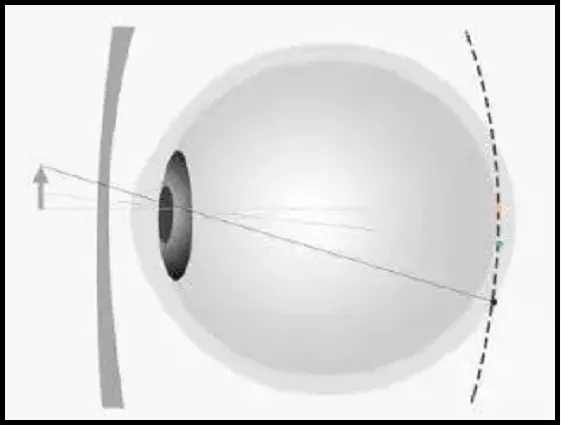The summer vacation is coming to an end unconsciously, and the children are about to start school, which means they need to return from a leisurely holiday rhythm to a state of hard work and learning.
However, due to the increase in academic workload, eye environment, and eye habits, how to prevent or delay the deepening of myopia in children has become a very headache for parents.
In recent years, the government, medical institutions, and a wide range of social organizations have gradually carried out myopia prevention and control work. With the continuous deepening of myopia prevention and control work, most people have formed a consensus on myopia: true myopia is irreversible. So, slowing down the progression of myopia has become a common goal of myopic parties.
In fact, currently, the main methods to delay the progression of myopia include frame glasses, orthokeratology lenses (OK lenses), and newly developed myopia defocusing glasses, with the latter two being more effective.
However, how they delay the progression of myopia may not be very clear to everyone.

1、 Frame glasses
Effect index: ★★
Convenience Index: ★★★★★★
Price Index: ★★
Traditional frame glasses are the simplest method for preventing and controlling myopia, aiming to make the eyes see clearly, easily and safely. However, their disadvantages are also obvious, which is that the degree of myopia increases by 100-125 degrees every year.
From the design principle of the lens, the imaging design of the optical zone in the center of the frame glasses is completed on a plane. However, in reality, the retina is curved, which results in the central part of the lens being imaged directly on the retina, while the peripheral imaging is behind the retina, known as “farsightedness defocusing”.
Optical Principles of Ordinary Myopia Glasses ▲ Image Source: Chinese Journal of Glasses Technology
In order to adapt to external light, the eyeball forces the retina to extend backwards, allowing surrounding objects to be accurately focused on the retina. This promotes the growth of the eyeball towards the posterior imaging site, leading to axial elongation and further deepening myopia.
2、 OK lenses (corneal reshaping lenses)
OK lenses originated in the United States and have been developed for 50 years. They have been applied in 34 countries around the world and are currently internationally recognized as a method for delaying the progression of myopia in adolescents.
OK lenses are a type of rigid contact lens that can be worn for 8 hours while sleeping at night. Through the shaping force of the lens and the tension of tears, the corneal epithelial cells are redistributed and shaped into a lens shape. After waking up in the morning, the lens can be removed to achieve clear vision during the day.
Therefore, OK glasses are very suitable for children and adults with rapidly increasing myopia and those who do not want to wear glasses during the day.
OK glasses can slow down the progression of myopia by about 50%. If a child is suitable for wearing OK glasses, then Xixiaoma suggests wearing them as soon as possible. The earlier you wear it, the better the effect. If you wait until it exceeds 600 degrees, it may not be suitable.
3、 Myopia defocus glasses
Effect index: ★★★★
Convenience Index: ★★★★★★
Price Index: ★★★
Myopia defocusing glasses use peripheral defocusing technology, which changes the optical principle of traditional myopia glasses.
After wearing nearsighted defocusing glasses, the central part of the object image is projected onto the retina, while the peripheral part of the object image is projected in front of the retina, intervening and suppressing the tendency of axial elongation, preventing axial growth, and stabilizing the degree of myopia.
Myopia defocusing glasses fuse the correction area (central object image) with the defocused area (surrounding object image), which can correct a child’s vision and enable them to see distant vision clearly.
At the same time, the defocused area focuses the surrounding objects in front of the retina, strongly inhibiting axial growth and stabilizing the degree of myopia in children.
A 2-year clinical trial conducted by The Hong Kong Polytechnic University showed that myopic defocusing glasses have a control effect of up to 59% on increasing myopia degree and up to 60% on controlling axial growth.
It should be noted that focusing the surrounding objects in front of the retina may slightly reduce the contrast of the external objects seen by the eyes. However, by doing proper correction during fitting to avoid undercorrection, children can have good visual effects after wearing it.
By now, I believe everyone has gained some understanding of the three methods mentioned above for delaying the progression of myopia.
But Xi Xiaoma also needs to remind us that no matter which method is used to prevent and control myopia, it is necessary to consult a professional ophthalmologist, carefully examine the eye condition, and comprehensively consider the doctor’s advice and personal needs to determine the final prevention and control method.
